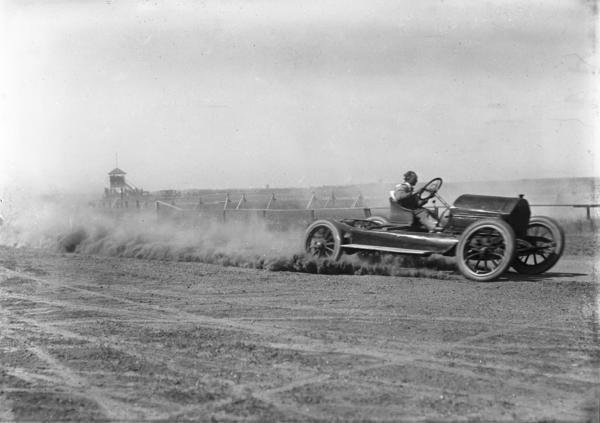- 1890s Cars
- Barney Oldfield Images
- Oldfield - Petersen
- Beer
- Early Auto Industry
- Uniontown - Marci McGuinness
- General Period Clip Art
- Early Race Related Clip Art
- Advertising and Editorial Cartoons
- Early Indianapolis
- IMS Construction
- Indianapolis Speedway
- First IMS Auto Races
- Failed 1909 Air Show
- 1909 IMS Balloon Races
- 1909 IMS Motorcycle Meet
- 1910 Indianapolis Auto Show
- 1913 Indianapolis 500
- 1919 Indianapolis 500
- Joe Dawson
- WWI "500" Winner Draft Cards
- Frank Di Buglione (off the wall art, LLC)
- Gilbert Art
- Carl Graham Fisher
- IMS Hall of Fame Museum
- Alco at 100th Anniversary
- Frederic Matile - Morris Park
- Miami-Fulford Speedway
- Paul Sheedy Collection
- Early Wyoming Racing - 1909 - 1919
- Personalities
- Early Racing Images
- Glidden Tour
- 1909 Cobe Trophy
- Fairmount Park & Belmont Estates
- Early Santa Monica
- Don Radbruch Collection
- Jeroen de Boer Collection 1910
- Jeroen de Boer Collection 1912
- Jeroen de Boer Collection 1913
- Jeroen de Boer Collection 1914
- Georges Boillot
- Story's Indianapolis 500 Cars
- Story's Sports Cars
- Story's Grand Prix Cars
- Old School
- Story's Brickyard Sketchbook
Wyoming Racing #1
Photo Gallery Categories
Search
Featured Article
Image of The Week

This image was submitted by historian James Fuller. The venue was the four-mile dirt track at Cheyenne, Wyoming. The track operated from 1909 to 1919. Check out additional images on First Super Speedway.
According to another historian, Robert Rampton, we learn this is Harold Brinker, at speed in his Cadillac “8”, heading into the south curve at the end of the home straightaway at the "Frontiers Day" racing celebration in 1915. By this time the track had been shortened to one mile. Sources from the time indicate the car was painted a sinister “coal-black." Model 51 Cadillacs, with a 314-cubic inch, L-head V8 was introduced model wide in September of 1914 and marketed as 1915 cars. They were rated at 70 hp and had a wheelbase of 122 inches.
Robert has more to share about Brinker. He reports that Brinker and this particular car were well known and highly regarded in Western U.S. racing, particularly in Colorado and Wyoming. He competed in city-to-city runs, raced locomotives, ran in speed carnivals at Denver's Overland Park track. He was reportedly always ready for a match race challenge.
Robert is not sure but believes Brinker was hired by Cadillac of Denver to drive this car. He apparently destroyed the machine in a big shunt during a Denver-to-Cheyenne race in 1916. Brinker went into business by opening up an automobile garage in Denver. He raced a variety of cars, including Chalmers and Mercer but in 1918 was drafted into military service during World War I. Apparently, he was not sent overseas but instead was placed into service training soldiers in auto mechanics.
Update from Robert (07/12/2021) - Harold S. (Swinny) Brinker will probably be best known as driver of the famed New York - Paris Thomas Flyer from Ogden, UT to San Francisco. He was part of Lynn Mathewson's organization in Denver and made quite a name for himself driving big Thomas racers at Denver's Overland Park track. He briefly lived in Cheyenne and opened a auto agency there. He also raced the beach at Galveston TX during this time. In 1916 he piloted his Cadillac, in the open Free-For-All class up Pikes Peak. After his service and discharge after WWI, he returned to Denver and the automobile game, racing all comers, and trains for all the prize money he could. During the 1930's he and a partner founded the Motor Seal Corporation, based on several patents he owned using vermiculate paste as a sealant for auto engines. It found wide application in the mining and oil drilling industry. Brinker married late in life and relocated to the mid-west and became a respected oil engineer and driller. He died there from natural causes after WWII. In the early 50's his wife had him reburied in the Veteran's Cemetery in Denver. As far as I have been able to determine, he and his wife had no children.
In the early racing days, the 4-mile Cheyenne race track was part of the Frontier Days rodeo complex. The course was dirt, and snaked its way around a large lake. The straight - a - way passed in front of the main grandstand. By 1911, or so, after complaints that spectators could not see the cars, the lake was partially filled in and the course whittled down to a conventional mile oval. The infield was also used as an airfield. The afore mentioned Harold Brinker also had aspirations to fly. He built a large shed on the track grounds and built a bi-pane, similar to a Curtiss, and conducted tests and exhibition flights during Frontier Days. If I recall, he crashed fairly often.
| Attachment | Size |
|---|---|
| Meyers Neg 1 Auto races, Cheyenne 7-20-1915_preview.jpeg | 925.55 KB |
